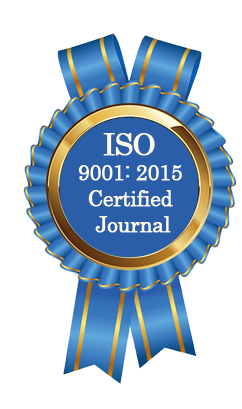| All | Since 2020 | |
| Citation | 105 | 60 |
| h-index | 4 | 4 |
| i10-index | 3 | 2 |
WJAHR Citation 
Login
News & Updation
Best Article Awards
World Journal of Advance Healthcare Research (WJAHR) is giving Best Article Award in every Issue for Best Article and Issue Certificate of Appreciation to the Authors to promote research activity of scholar.
Best Article of current issue
Download Article : Click here
Indexing
Abstract
COMPARATIVE STUDY OF VISUAL INSPECTION WITH ACETIC ACID (VIA TEST) AND VISUAL INSPECTION WITH LUGOL’S IODINE (VILI) FOR CERVICAL CANCER SCREENING
*Saba Samir Salman, Hiba Dhari Al Ameri and Asan Ali Al Niyazee
ABSTRACT
Beginning: The frequency of cancer and related fatalities is increasing around the world. Cervical cancer is the fourth most common form of cancer. The natural history of the disease's progression is from 10-20 years. As a result, the diagnosis of the disease earlier can mitigate the fatal consequences of the disease. The study intended to assess the effectiveness of visual detection of cervix using acetic acid (VIA) as opposed to the traditional method of observing the cervix for signs of cancer (VILI). Methods: A cross sectional study of 100 married or sexual active women in the reproductive age bracket (25-59) who they visited in the Al Elweiya hospital in Baghdad, Iraq. Data was gathered from the women's health care unit in the hospital during the time period from (1/9/2022 to 1/5/2022). The VIA and VILI tests were employed to screen for cervical cancer. Those with positive results for any screening procedure were subjected to a biopsy of the cervix. RSSULT: The investigation's sample of 100 participants that were between the ages of 25 and 59. VIA was positive in 20/100 (20%) patients and VILI was positive in 18/100 (18%). Biopsy of the cervix was performed for women who had a positive result on either VIA or VILI. Histological evidence of cervical intrepithelial neoplasia (CIN2+) is considered the highest standard. The sensitivity, specificity, positive predictive value, and negative predictive value of VIA were 100%, 50%, 30%, and 100%, and VILI 100%, 57%, 33% and 100% respectively. CONCLUSION: Lesions that are precancerous or cancerous at the cervix can be effectively detected by VIA and VILI in low resource settings. The utilization of both testes increases the specificity of these options, making them ideal candidates for the screening of cervical cancer in this community.
[Full Text Article] [Download Certificate]
